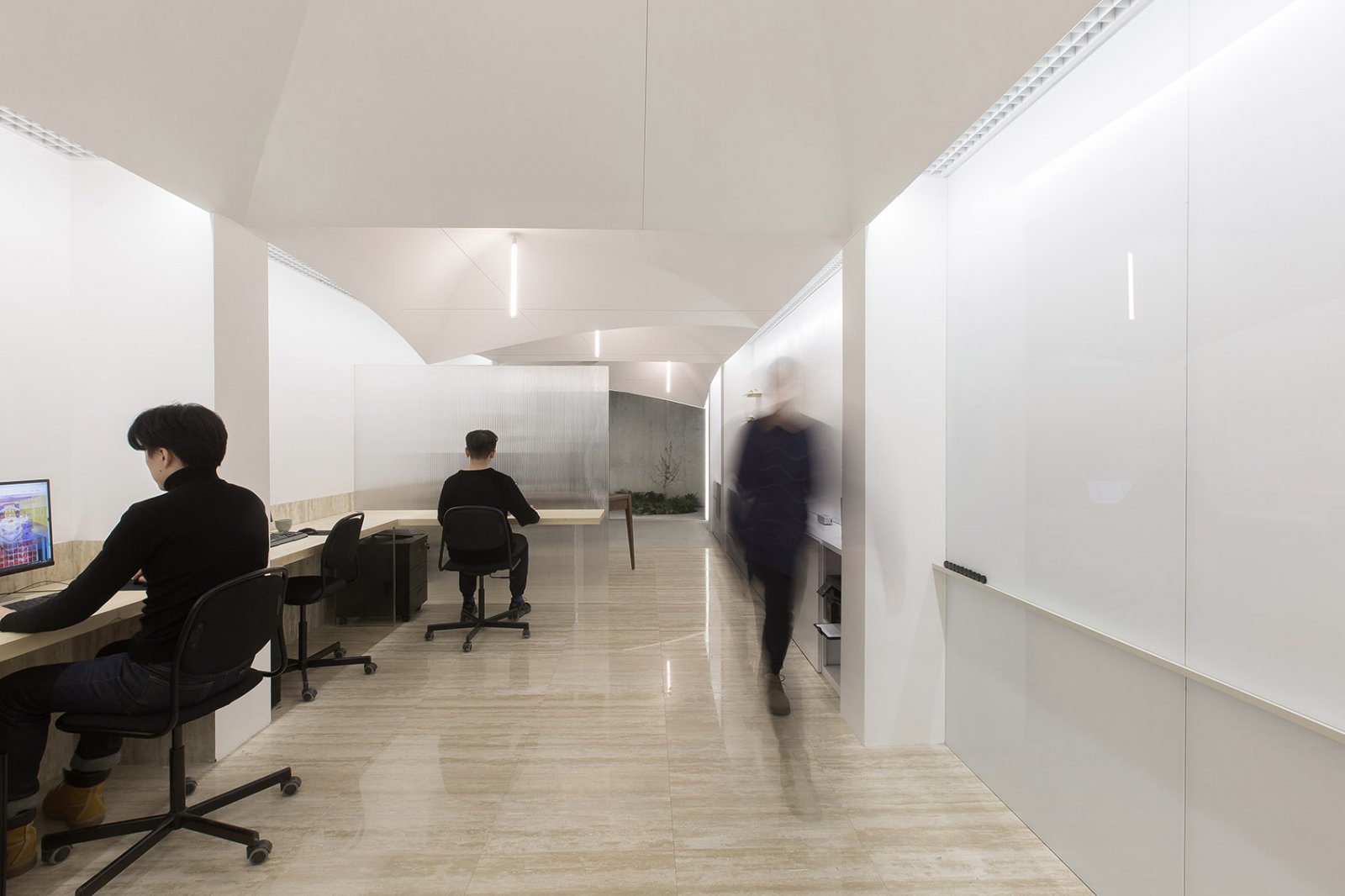House 2.0 FARO Architecten
2012-11-05 01:00
架构师提供的文本描述。在斯蒂格列兰的节能住宅成功之后,法罗已经将第二个版本推向了一个更高的水平。住宅2.0是能源中性的,是按照摇篮到摇篮的原则建造的.二氧化碳减排将达到100%。
Text description provided by the architects. After the success of an energy-efficient residence on Steigereiland, FARO has pushed to a higher level for this second version. Residence 2.0 is energy-neutral and is build according the cradle-to-cradle principles. The CO2-reduction will be 100%.
通过使用三层玻璃、100%液体密封接头和热交换器,使房屋达到绝缘值为RC=10的被动房屋水平,实现了这一二氧化碳减排。绝缘材料是有机的。屋顶线、风车和光伏电池的集成光伏电池产生足够的电力,既能满足名义上的电力需求,又能加热水。
This CO2 reduction is realized by bringing the house to a passive house level with an insulation value of Rc=10 using triple glazing, 100% liquid-tight joints and heat exchangers. The insulation materials are organic. The integrated photovoltaic cells in the roof line and the wind mill and PV cells generate enough electricity to supply both the nominal electricity demand as well as for the heating of the water.
一个2立方米的锅炉给水容器提供了大量的能量积累。该热交换器结合高水平的绝缘和三层玻璃提供了很大程度的舒适性。空气供应通过外部,并将由唯一的地面源热交换器,两米以下的房子。空间加热和热水的额外能量将由温水收集器提供。这些都整合在墙面的檐上。如果需要的话,可以使用球团炉来提高温度。电力将由东齐风力涡轮机、光伏电池和6平方米奥隆DF热管提供。
A very large boiler feed water container of 2 m3 provides a large accumulation of energy. The heat exchanger in combination with the high level of insulation and triple glazing provides a great level of comfort. The air supply comes via the outside and will be heated by a Sole ground source heat exchanger two meters under the house. Extra energy for space heating and warm water will be supplied by warm water collectors. These are integrated in the cornice of the façade. The temperature can be increased if needed by use of a pellet stove. Electricity will be provided by a DonQi wind turbine, PV cells and 6 m2 Auron DF heat pipes.
这座房子的设计是以早期版本的住宅为基础的。上面的楼层是一样的,但独特的部分,像一个挂起的客厅,已经改变了。外立面是用烧木做的。一种古老的日本技术,以自然的方式保存木材。烧焦的顶层保存木材,不需要油漆或浸渍。这个家是围绕着一楼厨房里的一个大房子而设计的。楼梯上有一层分隔的楼层,有一个大阳台和一个起居室。客厅坐落在一棵水平的树上。使用这种树的特点是房子里所有的木材:树木、木材和灰烬。这棵树是从阿姆斯特丹的一条运河中抢救出来的,在那里它必须被移走以修复码头。
The design of the house is based on an earlier edition of the home. The upper floors are the same, but the unique parts, like a hanging sitting room, has changed. The exterior façade is made of burnt wood. An old Japanese technique that preserves the wood in a natural way. The burnt top layer preserves the wood and eliminates the need for paint or impregnation. This home is designed around a large live in kitchen on the ground floor. Up the stairs is a split level floor with a large balcony and a living room. The living room rests on a horizontal tree. Using this tree features all stadia of wood in the house: tree, timber and ash. The tree was salvaged from one of the canals of Amsterdam, where it had to be removed for restoration of the quay.
Courtesy of FARO Architecten
 举报
举报
别默默的看了,快登录帮我评论一下吧!:)
注册
登录
更多评论
相关文章
-

描边风设计中,最容易犯的8种问题分析
2018年走过了四分之一,LOGO设计趋势也清晰了LOGO设计
-

描边风设计中,最容易犯的8种问题分析
2018年走过了四分之一,LOGO设计趋势也清晰了LOGO设计
-

描边风设计中,最容易犯的8种问题分析
2018年走过了四分之一,LOGO设计趋势也清晰了LOGO设计








































































